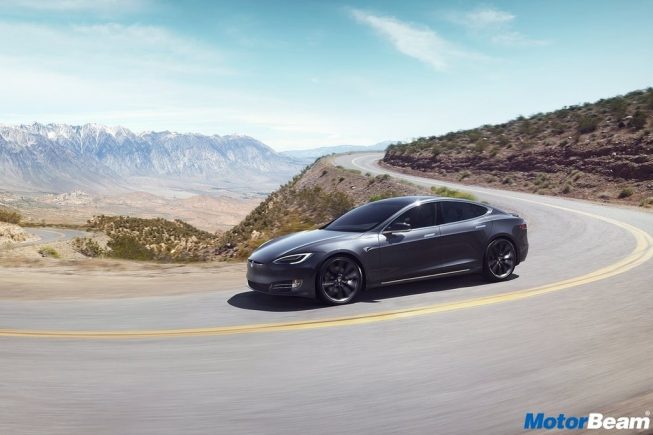Going electric is better, but it’s not the best alternative for our future!
In my previous article, which you can read here, I discussed how electric cars cannot fill the gap left by the diesel-powered cars by 2020. Internal combustion engines have to be phased out as soon as possible for the sake of our environment. But is electric the future? Electric cars are all the craze today! But certain factors could stop it from taking the cake as the future of the automotive industry.
Do note that the term “electric” can be misleading here. Electric, in this case, refers to battery power, not the motors. With that out of the way, let us proceed with why electric cars are not the future!
Scale Of Lithium Production
Most of the rechargeable batteries that are utilised for commercial purposes are of the Lithium-ion type (Li-ion). Now, lithium is not a rare metal per se. But in our portable-technology ridden world, lithium is pretty much stuffed in everything (even in a coffee mug!). Cars are the new entrant in this trend.
But the problem comes with the scale. Battery packs are a collection of cells, which are about the size of a standard AA battery (at least for Tesla/Panasonic). As one can imagine, one cell cannot pack 85 kWh inside it. So how many of these do you need? 7104 cells! Let that sink in for a moment or two. Instead of making one battery pack, one could make nearly eight thousand smartphone batteries! Tesla has opened the 1000 acre Gigafactory near Reno, Nevada solely for this purpose!
Battery packs are expensive to make, this cost can be seen at the window sticker of these cars, hence, the lower customer base. But mass-market cars like the Tesla Model 3, Hyundai Kona EV, etc. will make the electric car more accessible. This would lead to more production of these batteries. While this might not be bad upfront, it can lead to some adverse effects.
Is It Safe?
This is really a teething issue. But that does not deny the fact that lithium batteries are difficult to safely make at such a high pace. Tesla have already expressed their concerns on the pace of Panasonic’s battery making. (Panasonic is a battery supplier for Tesla). This lack of pace is concerning, as lithium-ion batteries are extremely dangerous if not manufactured properly.
Look no farther than 2016, with the Samsung Galaxy Note 7 battery fiasco to know what happens when lithium gets angry. When the product was discontinued Samsung said that the fires were caused by an anomaly in the battery manufacturing process that caused the anode and cathode of the battery to make contact. When that happened, there was an unanticipated, detrimental firework coming at the owner.
I state this incident to throw some light on the current pressure the battery manufacturers face. Customers are not satisfied with the range of electric cars, which has made companies push the envelope on these technologies. When this goes downhill, safety becomes a major concern. Lithium burns really hot and can pollute the surroundings quite heavily with its toxic fumes. So those emission savings that are made will be gone in an instant. The recent fires that have propped up are evidence of the fire hazards these batteries posses.
But, as I told earlier, this is really an adoption issue. If you think about it, carrying litres of highly flammable fuel a few meters behind an engine which is internally exploding all the time doesn’t sound safe either. (Internal Combustion). But the manufacturing has to be taken care of, as safety cannot be traded for anything!
The State Of Play
Hydrogen fuel cells, biofuel, etc. are all excellent alternatives other than the lithium-powered cars we have today. Graphene, a carbon compound which has nearly twice the energy density of lithium is being developed. But it is not mainstream yet, so aren’t the other aforementioned alternatives. And that’s really why electric cars make sense for today. They are certainly greener than internal combustion engines but are not as the other ways we can go about powering the wheels of a car.
The charging technology is not so good. How much ever you try, batteries need time to charge up. While companies have tried to minimise this time, they can’t make it as fast as just filling up a tank! This speed also hurts the age of the battery pack, which would lead to more replacements, more thousands of battery cells used!
The disposal of these cars is also not easy. The batteries need to be recycled properly. This means that they can’t just be left to decay, like many cars in junkyards. Cars are no more just metal, they have many environmentally concerning items inside of them that need safe disposal. We need to take proper care when doing so, as these chemicals present in these batteries should not come in contact with moisture or any organic material for that matter. Proper disposal services need to be initiated by the manufacturers or aggregators.
Conclusion
While the current electric cars may lure us into this idea of battery-powered cars with state of the art technology and record crushing performance. It’s not all positives, and we all need to realise that and take a step back and see the caveats. But among all of the current mainstream options, electric is the best way possible, and only if we start embracing it, will the new tech come up. So it’s time we do so!

